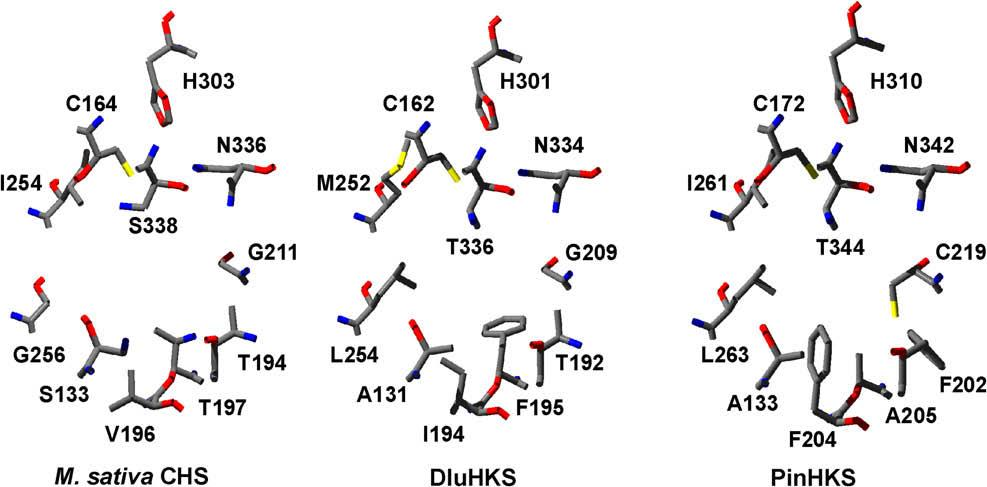Resveratrol
CAS number: 501-36-0
Resveratrol is a plant polyphenol found in high concentrations in red grapes that has been proposed as a treatment for hyperlipidemia and to prevent fatty liver, diabetes, atherosclerosis and aging. Resveratrol use has been associated with rare instances of serum enzyme elevations during therapy but has not been convincingly linked to episodes of clinically apparent liver injury.
Related images

Models of the active sites of M. sativa CHS2, DluHKS and PinHKS. The structures of DluHKS and PinHKS were modeled based on the structure of M. sativa CHS2 complexed with resveratrol (PDB code 1CGZ, resveratrol not shown).
Related Questions and Answers
A: Resveratrol exhibits low oral bioavailability due to extensive first-pass metabolism by cytochrome P450s, UDP-glucuronosyltransferases, and sulfotransferases, resulting in plasma concentrations (0.3–2.4 μM) far below in vitro effective levels (>10 μM).
A: Resveratrol reduces Tau hyperphosphorylation by activating protein phosphatase 2A (PP2A) via disruption of the MID1-PP2A complex, inhibiting GSK-3β and CaMKII, and activating the PI3K/Akt pathway.
A: Resveratrol reduces Aβ accumulation by directly binding to monomeric and fibrillar forms of Aβ (1–40 and 1–42), promoting proteasome-dependent degradation of Aβ, and enhancing autophagy via the TyrRS-PARP1-SIRT1 signaling pathway.
A: Resveratrol (RSV) is 3,5,4′-trihydroxystilbene, with a molecular weight of 228.25 g/mol. Its structure features two phenol rings connected by a double styrene bond, containing three hydroxyl (-OH) groups that confer antioxidant and biological activity.